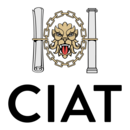There's no BIM like home

|
Contents |
[edit] Introduction
Read how CIAT member Dan Rossiter used BIM to produce an information model of his home.
While my draft Employer’s Information Requirements (EIR) are out for consultation, I wanted to talk about another related project I have been working on: trying to make my home a little smarter.
Before we moved into our house, I daydreamed about the kind of ‘smart’ things my house would do. So, when we moved in there was obviously a purchase I needed to make straight away – I got myself a Nest thermostat.
[edit] Smart house
The house had no thermostat at all, meaning that I would have to control the heating by punching the boiler’s clock guessing when I’d need the house heated. Now, I am able to programme my heating either directly through the thermostat or through its mobile app, meaning on a chilly day I could switch the heating on while I head home, or make sure it isn’t heating while I’m away.
The real value however is its ability to be part of the ‘Internet of Things’ (IoT). IoT is a data exchange network of connected devices, software, and sensors allowing data from one to influence another. For example, I have been using IFTTT to allow my house to speak to me.
IFTTT (If this then that) is a simple automation service allowing products, sensors, and services to trigger actions. For instance, since setting it up last week, I have set up a number of recipes:
[edit] Home reporting
I currently have the following recipes set up using smart devices in my home:
- If (Nest Thermostat Temperature > 24°c), then (let me know).
- If (Nest Thermostat Temperature < 15°c), then (let me know).
- If (Nest Protect Battery Level = low), then (let me know).
- If (I’m nearby house), then (turn on mobile WiFi).
[edit] Automatic reporting
I also have the following recipes set up using data from outside of my house:
- If (Time = 07:00), then (report the weather forecast).
- If (Time & Date = Monday, 21:00), then (remind to put the bins out).
- If (Weather = Rain), then (let me know).
In a moment of madness, I decided that the best method of having this information exchanged was over twitter, meet Ty Crempog (@TyCrempog):
After joining twitter last week, my house has already gained 16 followers, and has automatically sent me over twenty tweets including daily weather reports, a reminder to put the bins out, and this message to let me know my living room was getting quite warm.
I hope to expand its ability by integrating other smart products and services when I deem their automation useful. For instance, I’m going to be getting myself a Phillips Hue starter set this week and using IFTTT to set up a few automations such as having my hall lights switch on at sunset.
The most important thing for me to consider is the value and risk of automation. I could for example have my living room temperature tweeted every degree change, but that doesn’t provide any value and would allow someone to see when I am not home. So, for now I will stick to trying to improve my home, one smart choice at a time.
[edit] Feedback time
So now that I have had my respite, let’s find out how my Employer’s Information Requirements fared following its review.
Following the publication of my draft EIR a fortnight ago, I decided that I needed to get some feedback to ensure that what I have written is suitable.
Having worked on both the client and supply side in the past, I am confident in my work, but it is always good to get some fresh perspectives.
As such, I asked a few friends in the know.
I asked each of them to review my EIR as if I was procuring them to undertake the work, as well as asking for any suggestions they had to improve this document.
Here is what they had to say:
[edit] Chris Weston, associate, Rio Architects
Rio Architects is a Cardiff- and London-based architectural firm whose mission is to exceed client expectations through sustainable and economically-viable solutions.
“If Dan brought this job to Rio, while I appreciate it is a simple project, we would be looking for a bit more clarification on a few items, including details of roles such as project delivery manager, project information manager and employer’s representative.
“We would also be asking for clarification on the availability and details for any existing asset information, as well as clarification regarding whose responsibility it is to host the common data environment. Further detail would also be needed around the employer's decision points to enable the effective management of the supplier information exchanges.
“This EIR is clear, concise, and hopefully goes some way to demonstrate that BIM isn’t only about big hospitals and schools and that clients can tailor the process to suit even the most modest projects, even a pancake house.”
Score: 7/10
[edit] Henry Fenby-Taylor, BIM implementation manager WYG Group and co-founder of dotBuiltEnvironment.
WYG is a project management and global technical consultancy group that provides bespoke solutions to achieve client ambitions.
“An EIR needs to be a well thought out, lean, and relevant document that is project specific and specific to the needs of the employer. This is what I have seen in Dan’s EIR. However, falling foul of the terminology, it still remains relatively inaccessible to the untrained eye, but to the trained eye? “It’s tight, it doesn’t have any flab, it doesn’t ask for anything it doesn’t need, it specifically states where certain aspects of the BIM Level-2 standards are not necessary, such as the management of security assets.
“Where the EIR is less well refined is the specific requirements for data. While the core elements are included, more thought could be provided to make these requirements clearer. The specific data associated to the assets being managed and maintained are to my mind the core purposes of the information requirements.”
Score:8/10
[edit] Paul Surin, head of built environment for Weinerberger and vice-chair of BIM4M2.
Weinerberger is the world’s largest producer of bricks and a leading provider of clay roof tiles, concrete pavers, plastic and ceramic pipe systems and provides a myriad of sustainable and innovative solutions. Paul is also a BRE BIM Level-2 certificated professional.
“I have had a chance to review Dan’s EIR. The project is related to a domestic house. The wider industry would not normally associate BIM with a house; some would even say it is an overshoot. I disagree and I like Dan’s approach.
“This is something we, at Wienerberger, have been working on for the last couple of years – BIM in housing, such as our e4 house. This EIR’ seems to be very clear and very easy to understand as a supplier. In this case, a supplier could be a bricklayer, a merchant, a carpenter, a plumber etc, so it is vital to define and spell out his requirements in plain language.
“I would not specify WIN 7 and Intel i7 within the IT Section. I understand it might be the PC Dan uses, however it could limit some suppliers who use Apple or Android. Perhaps if a definition of a CDE with a web browser viewer (to allow annotations, collaboration and clash detection via a cloud) it would eliminate any need to specify any operating system.”
Score: 8.5/10
[edit] Implementation
Thank you everyone. Following these reviews, I have revised my EIR by including information regarding the Employer’s Representative and their contact details, confirmation that the Employer Decision points are covered within section 3.1, further detail on the need to appoint and specify who is undertaking the project information manager and project delivery manager roles, clarified my data requirements as well as added further clarity around the IT constraints. As such, I have now settled on the final published version:
This means I have now answered my final Brief Plain Language Question: PLQ1.6 complete.
[edit] About this article
This article was written by Dan Rossiter MCIAT. It was first published in CIAT’s AT magazine No 128 Autumn/Winter 2018 and can be accessed here.
[edit] Related articles on Designing Buildings Wiki
- Chartered Institute of Architectural Technologists CIAT.
- Artificial intelligence.
- Beyond BIM: Knowledge management for a smarter built environment.
- BIM and facilities management.
- BIM articles.
- BIM execution plan.
- BIM glossary of terms.
- BIM level 2.
- BIM maturity levels.
- BIM resources.
- Building engineering services.
- CIC BIM Protocol.
- Collaborative practices.
- Common data environment.
- Data drops.
- Digital information.
- Employers information requirements.
- Government Soft Landings.
- Industry Foundation Classes.
- Information manager.
- Level of detail.
- PAS 1192-2:2013.
- PAS 1192-3:2014.
- Real time.
- Soft landings.
--CIAT
BIM Directory
[edit] Building Information Modelling (BIM)
[edit] Information Requirements
Employer's Information Requirements (EIR)
Organisational Information Requirements (OIR)
Asset Information Requirements (AIR)
[edit] Information Models
Project Information Model (PIM)
[edit] Collaborative Practices
Industry Foundation Classes (IFC)






